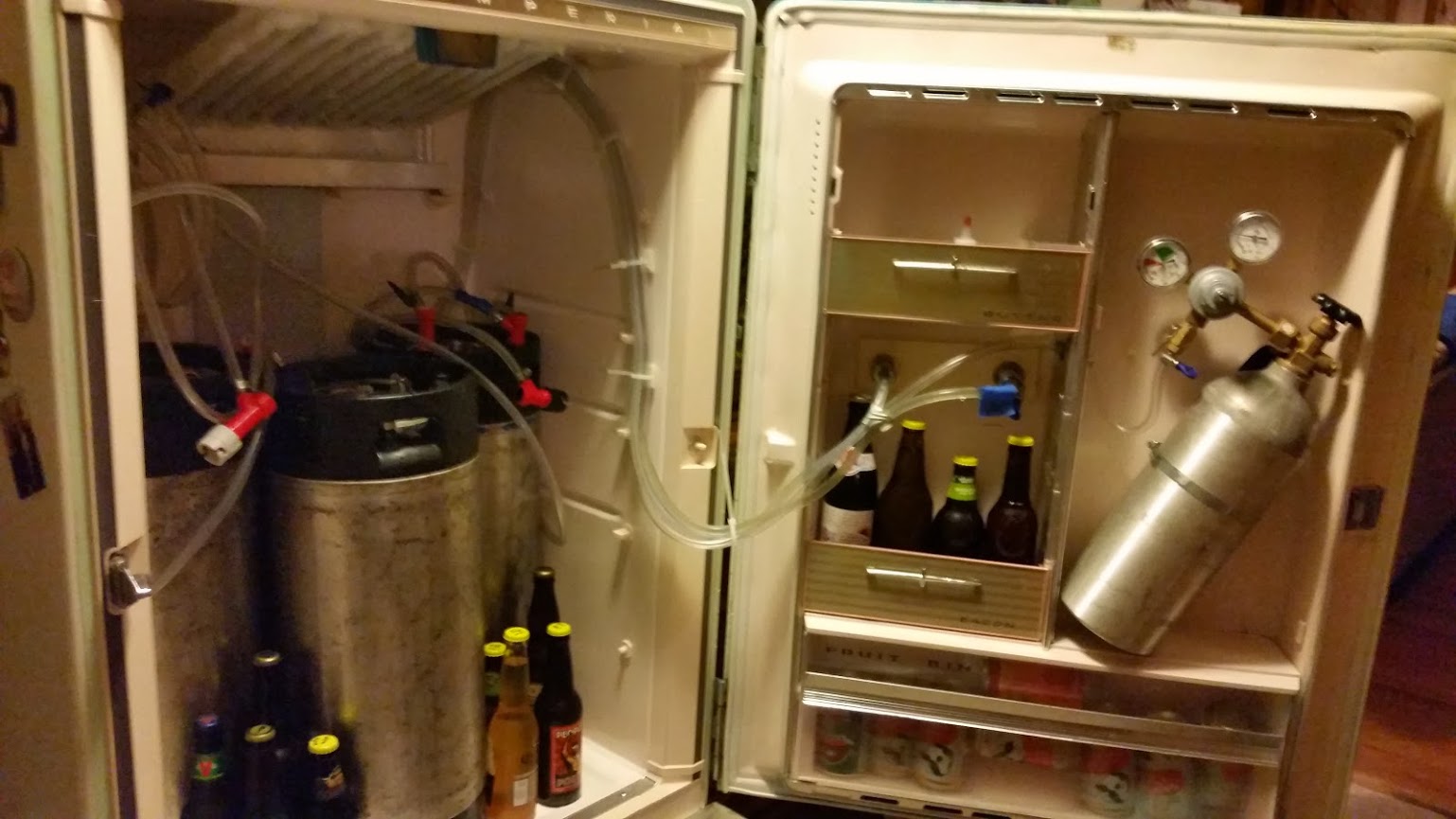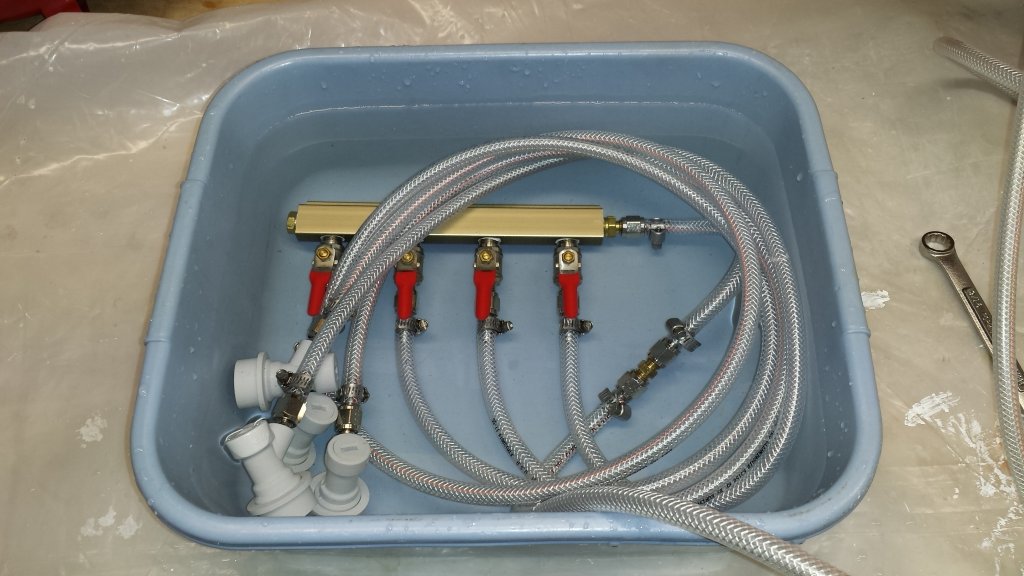Howhownow
Well-Known Member
I finished my new kegerator around September last year. It's a beautiful 40's Whirlpool/RCA that runs like a champ. This is my second kegerator build, so I learned a lot my first time around and my lines are much more organized, and nicely balanced.
I am having one ongoing issue that I can't seem to find pin down, and it's driving me to a bit of frustration: I have a slow gas leak somewhere. If I hook a fresh CO2 tank up at serving pressure, it takes about 2 weeks and the thing is dead, regardless of use. I've drained 3 tanks like this.
I appeal to your collective experience for help. In the spirit of working through this logically, I'll lay out the pertinent details, solutions I've already tried, and things I'm thinking or trying. This is unfortunately a tough one to test, because it costs me a full tank of CO2 each time.
Details:
- I run pin lock kegs
- I am currently keeping the regulator set to serving pressure, with the shutoff valve closed. I open it dailyish, or often during active serving to keep the kegs charged. This tells me the issue is not with the regulator or connection there.
- Run gas through a 3-way manifold, which only has 2 lines presently hooked up
Tried:
- Spray down everything in sight while hitting with high PSI's. No bubbles.
- Keg lube on every poppit, lid, and qd.
- Make sure my connections are all straight each time I attach a QD. (I've had a kegerator for years, this has never been the issue for me)
Thinking of:
- Nuclear option: tear down and rebuild whole gas side. I would REALLY prefer not to do this. My lines are run and organized nicely, and this would be a big PITA.
- Charging up each keg while empty and not in use. Issue is- how can I tell if it's losing SOME presure? Could I submerge it in the tub?
- New poppits. I'd like to narrow it down to a culprit keg before I do this.
What I'd like to try is a systematic approach to find the line/connection that is bad. I'm just not sure the best way to go about it...
HELP

Gas line runs behind the coil on the top of the unit, manifold is on the left, out of view. Can snap a picture if needed.
I am having one ongoing issue that I can't seem to find pin down, and it's driving me to a bit of frustration: I have a slow gas leak somewhere. If I hook a fresh CO2 tank up at serving pressure, it takes about 2 weeks and the thing is dead, regardless of use. I've drained 3 tanks like this.
I appeal to your collective experience for help. In the spirit of working through this logically, I'll lay out the pertinent details, solutions I've already tried, and things I'm thinking or trying. This is unfortunately a tough one to test, because it costs me a full tank of CO2 each time.
Details:
- I run pin lock kegs
- I am currently keeping the regulator set to serving pressure, with the shutoff valve closed. I open it dailyish, or often during active serving to keep the kegs charged. This tells me the issue is not with the regulator or connection there.
- Run gas through a 3-way manifold, which only has 2 lines presently hooked up
Tried:
- Spray down everything in sight while hitting with high PSI's. No bubbles.
- Keg lube on every poppit, lid, and qd.
- Make sure my connections are all straight each time I attach a QD. (I've had a kegerator for years, this has never been the issue for me)
Thinking of:
- Nuclear option: tear down and rebuild whole gas side. I would REALLY prefer not to do this. My lines are run and organized nicely, and this would be a big PITA.
- Charging up each keg while empty and not in use. Issue is- how can I tell if it's losing SOME presure? Could I submerge it in the tub?
- New poppits. I'd like to narrow it down to a culprit keg before I do this.
What I'd like to try is a systematic approach to find the line/connection that is bad. I'm just not sure the best way to go about it...
HELP

Gas line runs behind the coil on the top of the unit, manifold is on the left, out of view. Can snap a picture if needed.










![Craft A Brew - Safale S-04 Dry Yeast - Fermentis - English Ale Dry Yeast - For English and American Ales and Hard Apple Ciders - Ingredients for Home Brewing - Beer Making Supplies - [1 Pack]](https://m.media-amazon.com/images/I/41fVGNh6JfL._SL500_.jpg)
















































